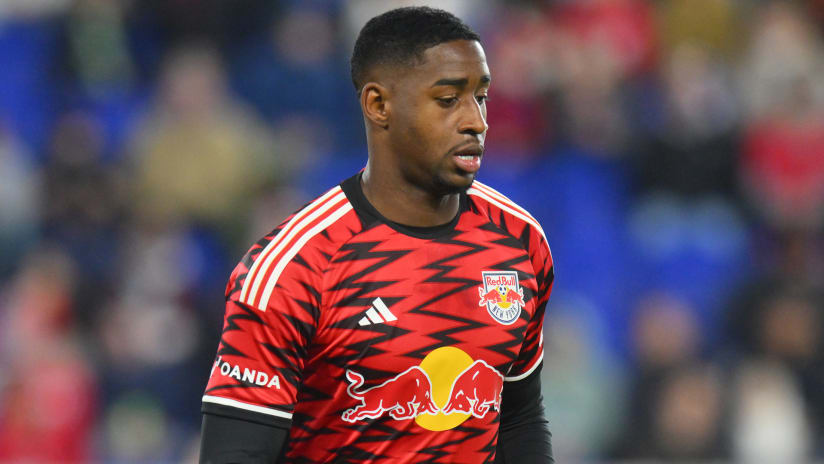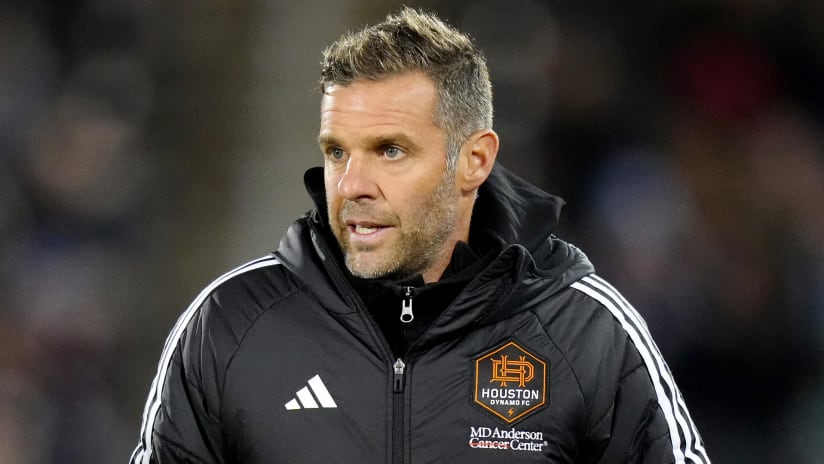Not every take is a good take. Look no further than my dire 2016 MLS predictions for irrefutable proof.
Just a few weeks after I made those picks – in the wake of the Colorado Rapids’ trade for Jermaine Jones (and his six-game suspension) and the blockbuster signing of Tim Howard – an email arrived in my inbox with this subject line: 'Do Jones and Howard make the Rapids a playoff team? Discuss!'
My response was dismissive at best, and downright disrespectful at worst. “Going to be a brave soul who says they’ll make it,” I replied. “Could they? Sure, anything could happen. Will they? I just can’t see it in the West. Too many teams that are better.”
By now you know how that take, which wasn’t particularly hot at the time, turned out.
So here I am, seven months later, eating a heaping portion of crow – beak, feathers, feet and all. I could have been that brave soul, instead I doubted a team that sealed its Audi MLS Cup Playoffs spot with weeks to spare and still controls its own Supporters’ Shield destiny.
So how’d the Rapids do it? Here are three reasons why Colorado went from the Western Conference basement and second-worst record in the entire league to one of the biggest success stories of the 2016 MLS season.

They established an identity and stuck to it
The 2016 Rapids won’t be remembered as a flowing, attack-minded side, but that’s just fine with head coach Pablo Mastroeni, now in his third season in charge. What they lack in panache, Colorado make up for in effectiveness, largely because they know and accept their limitations.
Mastroeni could have thrown caution to the wind and let the likes of Jones, Shkelzen Gashi, Kevin Doyle and Marco Pappa chase goals with abandon. Instead, he sold his players on a foundation of organized defending and timely goalscoring. It’s an identity the Rapids embraced, and they’ve since accumulated by far the stingiest defensive record in MLS.
Through 30 games, Colorado have allowed just 27 goals – eight fewer than their closest competitor, Toronto FC. The Rapids’ 13 clean sheets are tops in the league as well, and they’ve faced the second-fewest (118) shots on goal. Throw out a fluky 5-1 loss at Yankee Stadium, and their defensive record is downright historic.
The flipside is that they’ve scored the second-fewest (33) goals in MLS this year and are middle or bottom of the pack in most attacking categories. It hasn’t mattered. Nine different players have scored game-winning goals, as the Rapids got it done by committee. Defense and pragmatism came first, and results followed in due course.

Previous unknowns became household names
Mastroeni knew what he would get from the likes of veterans such as Sam Cronin, Marc Burch and Bobby Burling. But worst-to-first turnarounds in MLS almost always include a healthy cadre of young players who “make the leap.”
You may not have been familiar with Axel Sjoberg, Micheal Azira or Marlon Hairston before this year – in fact, you may still need to take a second to peruse their bios. But all three have emerged as above average MLS players, if not potential stars.
Sjoberg is probably best known as the towering Swede – at 6-foot-7, he is MLS’s tallest player – with the last name that English speakers struggle mightily to pronounce. He’s also likely to be a finalist in Defender of the Year voting, after a season in which he relied more on anticipation and good decision-making than physical superiority to quietly shut down opposing forwards to the tune of a shutout nearly every other game.
Of course, Sjoberg had plenty of help. Azira was a bit-part player in Seattle, and few thought his selection by the Rapids in the Waiver Draft was more than a depth play. Then Mastroeni installed the run-all-day midfielder next to Cronin and let Azira do what he does best: break up play and find the feet of his more attack-minded teammates.
Enter Hairston, a first-round 2014 SuperDraft pick who came into the league with a US youth international pedigree but spent all but three games of his 2015 sophomore campaign on loan in USL. Was he an outside back? A winger? A box-to-box midfielder? Nobody really knew, until the now-22-year-old broke out this season as a versatile attacking threat (3 goals, 5 assists in 1,243 minutes) who should be a foundational piece for the club going forward.

They got some swagger
“Nobody believes in us!” is the preferred mantra of bad teams attempting to come good, but it was hardly a cliché in Commerce City as February turned to March. Then the Rapids made a pair of blockbuster moves that helped set the tone for the season ahead.
In came Jones, whose presence in training alone was enough to prompt players and coaches alike to rave about his effect on club culture, and Colorado went 3-2-1 as the US national team stalwart served his suspension. That paled in comparison to Jones’ influence once he hit the field, often in a marauding No. 10 role, as the club went 5-0-2 over the next seven matches with the dreadlocked dynamo chipping in three goals and two assists.
Thanks to a series of injuries, Jones dropped off the radar as May turned to June. No matter, however: The Rapids continued reeling off results until their unbeaten streak hit 15 games. By then, Howard was entrenched between the posts, bringing yet more vocal, veteran leadership to what was now a young, ambitious Colorado team comfortable with their identity and confident it would lead to results.
And it has. After a league-worst home mark in 2015, the Rapids have emerged as one of the best home teams in MLS (10-0-5). Their five losses are the fewest in the league. Their worst-to-first dream is within reach with four games remaining.
In the face of doubt, Colorado believed. In the face of what might have been a devastating injury to Jones, they persevered. In the process, the Rapids silenced their critics and set themselves up for what could be the best season in club history.
As it turns out, crow doesn’t taste so bad.













